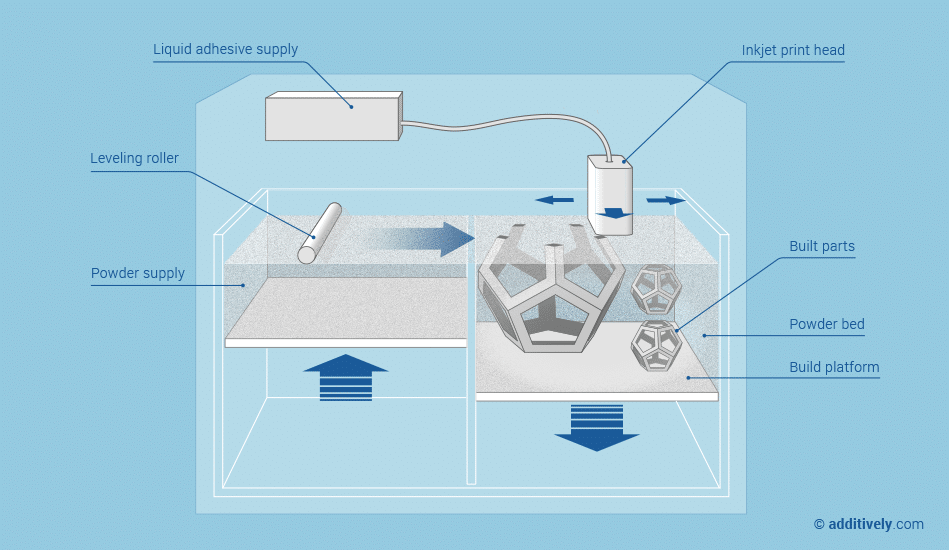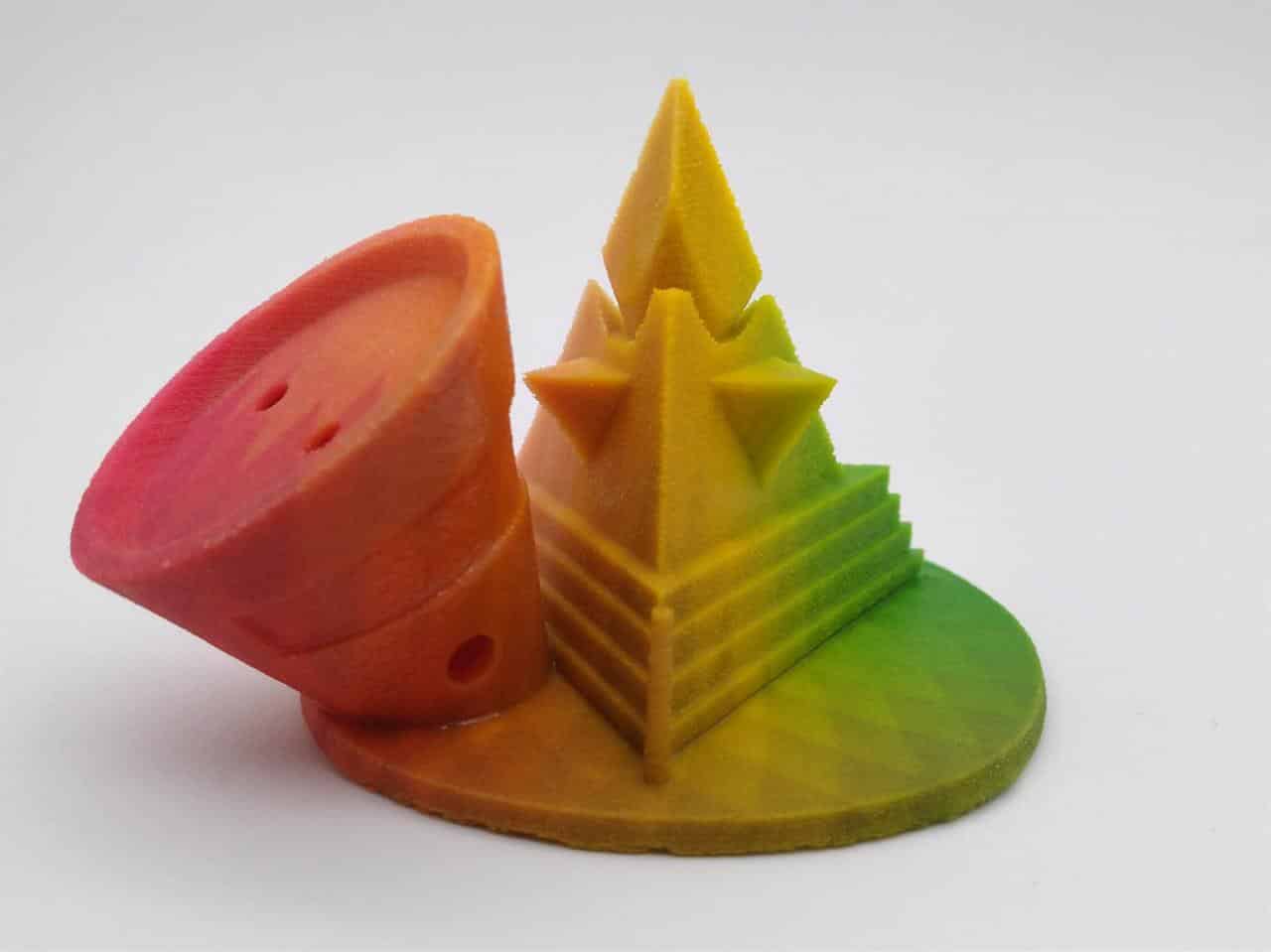Binder Jetting (BJ)
3D print exquisite metal parts without supports in as fast as 1 week.
Make exquisite metal parts starting at only $30!
Overview: How Binder Jetting works?
The Basics Of Binder Jetting
Binder Jetting (BJ) is an additive manufacturing technology which involves two major components ã core and binder. The core material is spread in thin layers over the build platform with a roller.
A binder jetting machine will distribute a layer of powder onto a build platform. A liquid bonding agent is applied through inkjet print heads bonding the particles together. The build platform will be lowered and the next layer of powder will be laid out on top. By repeating the process of laying out powder and bonding, the parts are built up in the powder bed.
Binder Jetting does not require any support structures. The built parts lie in the bed of not bonded powder. The entire build volume can therefore be filled with several parts, including stacking and pyramiding of parts. These are then all produced together. Binder Jetting works with almost any material that is available in powder form.
Benefits Of Binder Jetting
Binder jetting is a rather fast and cheap technology, working with a wide arrange of material types. Parts in full color (see also: Color Jet Printing, Multi Jet Fusion) are possible.
Binder Jetting works with almost any material that is available in powder form: Metals, casting sands, sandstone powders… The process is fast, simple and cheap as powder particles are glued together (as compared to e.g. laser melting where material is melted under protective gas environment). Certain binder jetting machines(see also: Color Jet Printing, Multi Jet Fusion) can print colors along with the binding agent creating full color parts.
Parts produced with the technology are basically particles glued together resulting in fragile parts with limited mechanical properties (if not further processed).This makes it the perfect material for figurines, avatars, 3D-scans, or anything that require full color, it’s especially ideal for the following purposes:
- Prototypes are produced in full color for visual and form / fit testing by binder jetting.
- Green parts are produced to be further processed with other manufacturing techniques. For instance metal parts are sintered in an oven process and then infiltrated.
- Casting patterns are produced as models to create molds for casting.
- Molds and cores for casting can also be directly produced in specialized casting sand
CJP vs Polyjet
Features of Binder Jetting
Advantages
Drawbacks
Binder Jetting Processes
– Printers: Desktop Metal Shop System – Maximal build volume: 350 x 220 x 200 mm – Minimum feature size: 0.4 mm – Minimum layer thickness: 0.05 mm – Typical surface finish: 50 microns RA – Accuracy: (+/- 2%) Important decision on design is the orientationThis depends on: – Geometry, mainly inclination to reduce layer lines. – Geometries that might shrink during sinteringPrinters & Parameters
Restrictions
Pre-build planning
Available Materials

Available Finishes
The raw finish option with the quickest turnaround.
The object is only cleaned of excess powder. This finishing leaves a grainy, rough surface.
The object is coated with a layer of varnish. This increases its resistance to humidity, water, and tumblings. This option leaves a matte finish.
Binder Jetting Applications
With CJP, the prototype can be made using realistic full-colored material with great details. Fast turnaround makes it a good choice for concept models.Concept models
The versatility and support-less method of CJP let architectural models come out vividly.models
CJP can be applied to make high-quality complex full-colored demonstrative models with quick turnaround time.Complex Geometries
Industries with Binder Jetting
Resources for Binder Jetting












